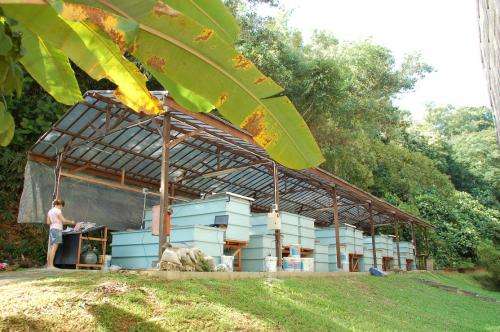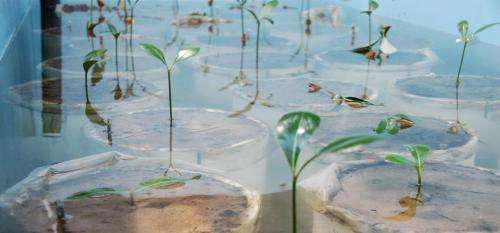Better protection for mangroves with models for successful seedling establishment

Seedlings of mangroves do not have an easy time to get established. Many forces of nature work against their anchorage in the soil. Human intervention in coastal areas and climate change also make life difficult for mangrove seedlings. Thorsten Balke studied the conditions that enable mangrove seedlings to be successful. On 18 December he will defend his PhD thesis at Radboud University.
Mangrove forests protect coastlines and are important for biodiversity; they are a nursery ground for many fish species and host a variety of plants that have adapted to grow in salt water. For successful management and restoration of mangrove forests, good understanding of the interaction between vegetation, soil and the forces of nature is required. Geographer Thorsten Balke studied the establishment of mangroves: how do the seedlings get to the tidal flat and what factors ensure their growth to become a successful mangrove forest? To answer these questions, he carried out experiments in Singapore and New Zealand.
The dangers of high tide
What is the biggest danger for mangrove seedlings? High tide. Due to the currents and waves that accompany high tide, sedimentation and erosion can prevent seedlings from becoming established on the bare tidal flat. During sedimentation, material carried by the water sinks to the l bed and accumulates there, essentially burying the seedlings. Erosion is another factor, whereby soil particles are removed from the bed by water currents.
Many limiting factors
However, the seedlings also work against themselves. Due to their own buoyancy, it takes some time before they become firmly anchored in the soil and can no longer be dislodged. Under ideal conditions, relatively short roots are sufficient, but only longer roots can withstand the currents and waves that accompany high tide. And after the seedlings are anchored in the soil, their growth process can still fail because they become buried by sediments, or they topple due to soil erosion.
Experiments in wave tanks
To study all these aspects in detail, Balke set up an experiment in Singapore to simulate the various rates of sedimentation and erosion at high tide. He did this in nine large water basins, 3 m x 1 m, with wave generators, in which he could manually push the silt up and down. In combination with wind data and tidal time series, Balke developed models for the establishment of young mangrove forests by predicting windows of opportunity: tidal periods in which the conditions are ideal for the establishment and further development of mangrove seedlings.
Models in practice

What can we do with these models? 'We now understand both the optimal conditions for successful establishment of a mangrove forest and the optimal location and optimal time to sow mangroves', explains Balke. 'Policymakers can take these factors into account when restoring mangroves. Moreover, with this information we can create scenarios to predict the consequences of climate change on mangroves.' The results of Balke's models emphasise that the most important factor for successful restoration is not planting seedlings, but improving the growing conditions for the seedlings. For example, in Indonesia mangrove rehabilitation projects are being developed using brushwood groynes to counteract erosion and enable mangrove seedlings to develop. Balke: 'All my publications are open source, so that everyone in the world can use this information freely.'
Provided by Radboud University Nijmegen



















